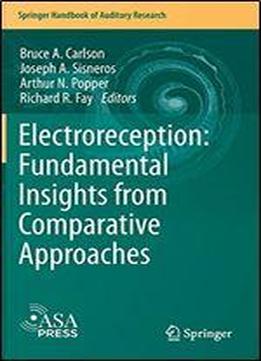
Electroreception: Fundamental Insights From Comparative Approaches (springer Handbook Of Auditory Research)
by Bruce A. Carlson /
2020 / English / PDF
14.2 MB Download
A fundamental goal of neuroscience is to understand how the nervous system extracts biologically relevant information from the natural environment and how it uses that information to guide and coordinate behavior necessary for reproduction and survival. The electrosensory systems of weakly electric teleost fishes and those of nonteleost fishes are attractive systems for addressing basic questions about neuronal information processing and its relationship to natural behavior. Comparative approaches in these fishes have led to the identification of fundamental mechanisms that have shaped the adaptive evolution of sensory systems across animal taxa. Understanding how sensory systems encode and integrate information about the natural world has far reaching implications for advancing our knowledge in the basic biomedical sciences and in understanding how the nervous system has evolved to control behavior.
The primary goal of this book is to provide a comparative perspective on the topic of electroreception and review some of the fundamental insights gained from studies of electrosensory and electromotor systems. Although totally independent, this book follows from volume 21 in the Springer Handbook of Auditory Research series, Electroreception (Bullock, T. H., Hopkins, C. D., Popper, A. N., and Fay, R. R., 2005, Springer-Verlag, New York).











